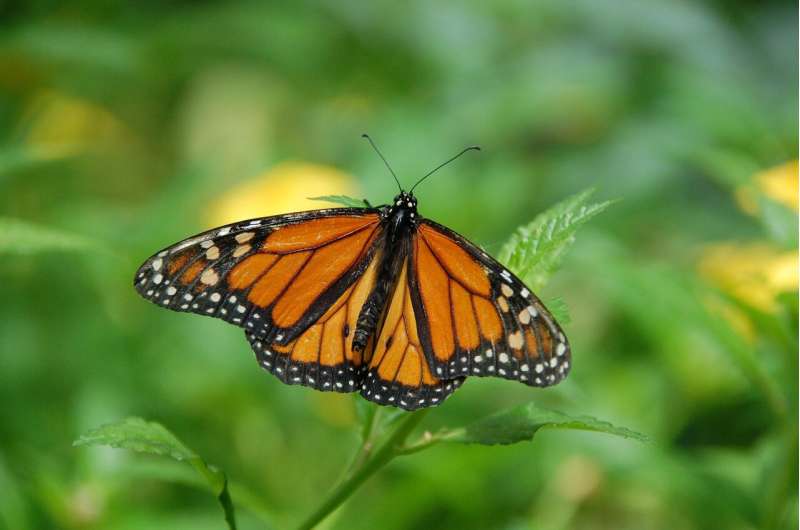Monarch butterfly counts rise in Colorado and beyond, but extinction concerns remain

An iconic winged beauty feared to be on the verge of extinction was spotted more around the West last year, including in Colorado.
In summarizing 2021 findings from its seasonal, decades-old count of black-and-orange-striped monarchs, it was a "surprising and remarkable outcome," read a recent news release from Oregon-based Xerces Society for Invertebrate Conservation.
Largely covering the butterfly's overwintering destinations along the California coast and largely led by volunteer scientists, the count yielded 247,237 monarchs. That, Xerces reported, was more than a 100-fold increase from 2020, a record year for wildfires across the West that hindered migration. It was the most counted since 2016, according to the organization, which also noted more volunteers out tallying in 2021.
"This year's total is a step in the right direction, but still indicates a severe population decline," a Xerces conservation biologist, Isis Howard, said in the release.
For western monarchs, that decline since the 1980s is believed to be 99%. For eastern monarchs—which meet western counterparts in Colorado on either side of the Rocky Mountains during their differing migrations—researchers have found that loss to be around 80% in the past two decades. Where millions were once logged, now locations are tallying thousands, hundreds or none at all.
With a growing group of volunteers forming the Colorado Butterfly Monitoring Network, Butterfly Pavilion has attempted to track numbers in the past decade. The Westminster center showcasing and advocating for invertebrates recently reported 2021 was the most prolific year for monarchs since counts started in 2013.
"Last year was the first time we saw a rebound in a while, which is promising," said Shiran Hershcovich, Butterfly Pavilion's lepidopterist manager. "However, even as I'm saying something like 180% more monarchs, that is still not at all close to recovery from numbers we used to see, those hundreds of millions."
Volunteers across 12 counties reported 124 monarchs—a 180% increase from the mean over the past seven years of monitoring, according to a report this month. Last year was the first year in Colorado Butterfly Monitoring Network's existence that monarchs cracked the top 25 of most species recorded, though zero were submitted from El Paso and Gilpin counties.
The program's 61 monitors contributed a record 551 hours and 502 surveys, according to Butterfly Pavilion.
While more eyes in the field might've spelled more monarchs counted, observers have contemplated other factors.
Populations can vary place to place along the migration any given year, with the three to four generations that monarchs breed along the way. Some have theorized that, while drought represents an existential threat, warm and drier conditions could be better for flying. Some hope the past year shows preservation and restoration efforts working across landscapes. They hope, too, the year indicates the butterfly's resilience.
"There are so many environmental factors at play across their range that there's no single cause or definitive answer for this year's uptick," Emma Pelton, the western monarch lead with Xerces Society, said in the news release, "but hopefully it means we still have time to protect this species."
Reasons for the loss are clearer.
Milkweed and other plants that monarchs feed and breed on don't fare well in a warming climate. Habitat has been lost to development. And pesticides have thinned monarch ranks stopping over agricultural fields.
"Of course I want to feel happy," Hershcovich said of the latest counts. "But I don't want to forget we're not where we should be."
She called on people to plant milkweed and other native flowering plants, avoid pesticides and reduce their carbon footprints.
"My personal favorite is getting involved with community science," she said, adding: "The biggest issue is getting enough data for findings to be as meaningful as we can make them."
© Colorado Springs Gazette.
Distributed by Tribune Content Agency, LLC.




















